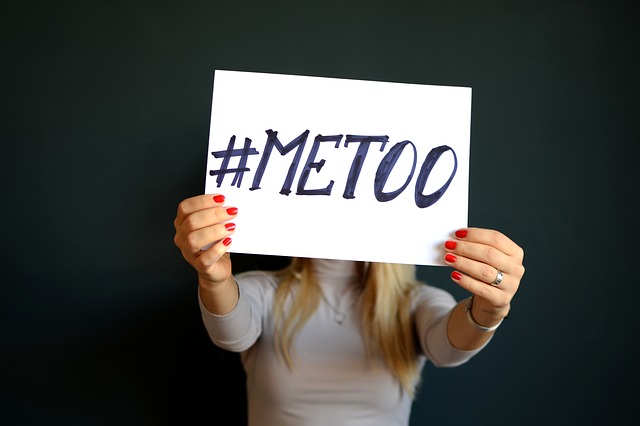By Eleni Papageοrgiou,
Assaulting any living being physically or psychologically is -without a doubt- blamable and triable. We take that for granted, in order to explain and discuss the #metoo movement and all cases involved. This slogan was first used in 2006 by Tarana Burke, a black woman from Bronx, who was raped and sexually assaulted at an early age (as a child and a teenager). Later, as an activist, she invented this phrase to encourage other women victims to talk about their experiences and stand up for themselves. Eleven years later the slogan comes back to life by Alyssa Milano who “overnight” managed to raise awareness by posting on Twitter, “If all the women who have been sexually harassed or assaulted wrote ‘Me too’ as a status, we might give people a sense of the magnitude of the problem”. Hundreds of people including many celebrities of Hollywood (e.g. Gwyneth Paltrow, Ashley Judd, Jennifer Lawrence, and Uma Thurman) used the hashtag, and impressively many cases were exposed about the well-known film producer Harvey Weinstein.
All this coming out of braveness of famous people, risking their careers and reputations, was the motivation for “next door” girls to share their moments of fear. But there are many reasons why a victim usually does not try to unveil such actions. First of all there is shame. According to Gershen Kaufman, “Shame is a natural reaction to being violated or abused. In fact, abuse, by its very nature, is humiliating and dehumanizing”. These actions also lead to the strong feeling of losing control of your body, and your life in general. In this way the abused feels helpless and “dirty” in front of their social circle. And then comes the denial and the devaluation of the event. It is a way of defence for balancing our mental health and maintaining a normal everyday life.
Needless to mention that factors such as fear of the consequences, low self-esteem, ignorance of one’s rights and the ways of dealing with an incident as well as the influence of drugs or alcohol prevent victims from confessing and asking for help from society in dealing with the real problem.

And the problem does not concern only women. There is a huge number of men and boys who have been sexually assaulted and they either do not admit it for social reasons or they are not safe to talk about it. In 2014, Lara Stemple, Director of UCLA’s Health and Human Rights Law Project, studied some statistics and discovered that among the incidents of sexual violence reported to the National Crime Victimization Survey, 38 percent of victims were men! She also reports that a 2011 survey of 302 male college students showed that 51.2 percent reported “at least one sexual victimization experience since age 16” and a 2014 study of 284 men and boys in college and high school found that 43 percent reported being sexually coerced, with the majority of coercive incidents resulting in unwanted sexual intercourse.
If that is not enough, here are many more shockingly examples such as:
- A 2005 study conducted by the U.S. Centers for Disease Control, on San Diego Kaiser Permanente HMO members, reported that 16% of males were sexually abused by the age of 18.
- A 2003 national study of U.S. adults reported that 14.2% of men were sexually abused before the age of 18.
- A 1998 study reviewing research on male childhood sexual abuse concluded that the problem is “common, under-reported, under-recognized, and under-treated”.
- A 1996 study of male university students in the Boston area reported that 18% of men were sexually abused before the age of 16.
- A 1990 national study of U.S. adults reported that 16% of men were sexually abused before the age of 18.

At this point what we should focus on is that 1 in 6 men has been sexually abused and society is still “blind folded”. Perpetrators can be of any gender, age or sexual orientation and they can have any relationship with the victim. There is no time for questions against the victim, like “Why didn’t you report that earlier?”, “Why were you with him/her?”, “Were you drunk?” etc. No matter what surveys and isolated incidents suggest, now is the time to exalt and vindicate the victims whether they are males or females. The possibilities of men being sexually abused may not be the same as those of women but the consequences to the victim’s life are exactly the same.
Wounds have to be healed but victims should know we are here to support them and cry out for such vicious actions to stop immediately.
References
- The 1 in 6 Statistic, 1in6.org. Available here.
- The understudied Female Sexual Predator, The Atlantic. Available here.
- Sexual Assault of Men and Boys, RAINN. Available here.




